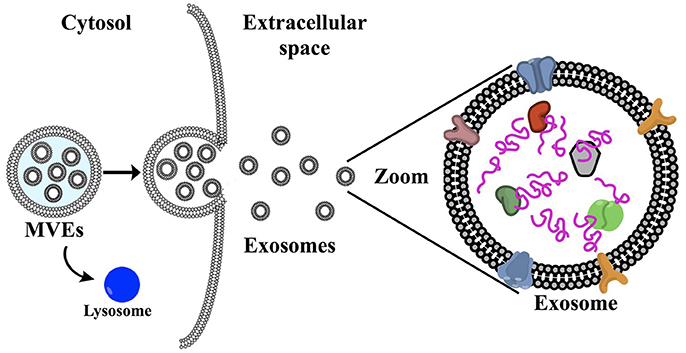Exosome Untargeted Metabolomics Analysis Service
- Tumor Metabolism Research: Investigate the metabolic regulatory roles of exosomes in the interaction between cancer cells and the tumor microenvironment.
- Disease Biomarker Discovery: Identify characteristic metabolites associated with a range of diseases, including cancer and metabolic syndrome.
- Personalized Medicine: Analyze the metabolic profiles of exosomes to inform personalized treatment strategies.
Exosomes (EX) are a heterogeneous group of extracellular vesicles, ranging from 30 to 150 nm in size, comparable to that of viruses. These vesicles are released by various cell types, including red blood cells, B cells, T cells, mast cells, platelets, endothelial cells, fibroblasts, adipocytes, epithelial cells, muscle cells, dendritic cells, and tumor cells. Exosomes play a crucial role in intercellular communication, interacting with receptor cells either locally through paracrine signaling or at a distance through endocrine signaling. In recent years, interest in exosomal metabolomics has grown, revealing their significant biological functions in both normal and pathological conditions.

De La Torre Gomez, C. et al. Front Genet. 2018.
Figure 1. Exosome Untargeted Metabolomics
MtoZ Biolabs employs the latest Thermo Orbitrap Fusion Lumos mass spectrometer in combination with nano liquid chromatography-mass spectrometry (nanoLC-MS/MS) technology to provide non-targeted metabolomics services for exosomes. This advanced technology effectively analyzes the diverse array of metabolites present in exosomes, including lipids, amino acids, organic acids, vitamins, carbohydrates and their derivatives, as well as nucleosides and nucleotides.
Service Advantages
1. High Sensitivity and Accuracy
Our advanced mass spectrometry technology ensures effective identification of low-abundance metabolites.
2. Comprehensive Metabolite Analysis
We can detect a wide variety of metabolites in exosomes, providing rich data support for research.
3. Rapid and Efficient Result Delivery
Our optimized experimental processes ensure swift generation of high-quality analytical results.
4. Professional Technical Support and Consultation
Our experienced team offers personalized analytical plans and technical guidance to meet the specific needs of our clients.
Sample Submission Requirements

Applications
For more information or to schedule a service, please contact us!
How to order?







